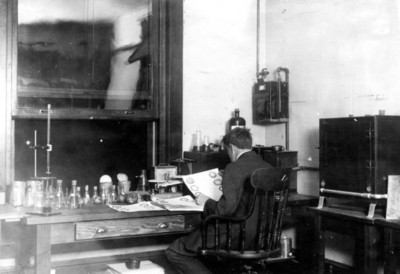The farms in Oregon are organized under extreme variation of climatic and soil conditions. Some farmers operate below high tide protected by dikes and tide gates. Others operate in valleys cut in between higher hills more than a mile above the sea. Some Oregon farm lands are watered by more than 60 inches of rainfall in a year, while others are successfully cropped under only 13 inches without irrigation; and with irrigation under seven inches. Snow falls but once in five years on the average in some farming regions, good old-fashioned New England winters occur nearly every year in others. A result is that practically every farm crop adapted to the north temperate zone can be grown in commercial volume in Oregon under some of these conditions of elevation, climate and soil.
—Frank Ballard, The Oregon State University Federal Cooperative Extension Service: 1911-1961
Agriculture has been at the core of the Extension Service program since its establishment. Agricultural Experiment stations were established throughout the nation following the passage of the Hatch Act of 1887. The research conducted at these stations resulted in an outstanding collection of new scientific information which had the potential to add tremendously to the incomes from farming if used. However, without agents in the field to distribute the knowledge gained from their research, the stations had little impact on state agriculture beyond the scientific bulletins, which were too technical and not widely read by farmers.
The availability and familiarity of new machinery and farm technology was also an issue for early Oregon farmers. Extension agents helped to organize co-ops and testing associations to assist large groups of farmers to have access to tools and supplies necessary to improve their product. The testing of cows for butter-fat, for example, was necessary to produce higher grade dairy products; however, few in the state had access to testing associations in 1912. In the first ten years of the state Extension Service, the number was increased from 82 to 452 cow-testing associations with the assistance of county agents.



